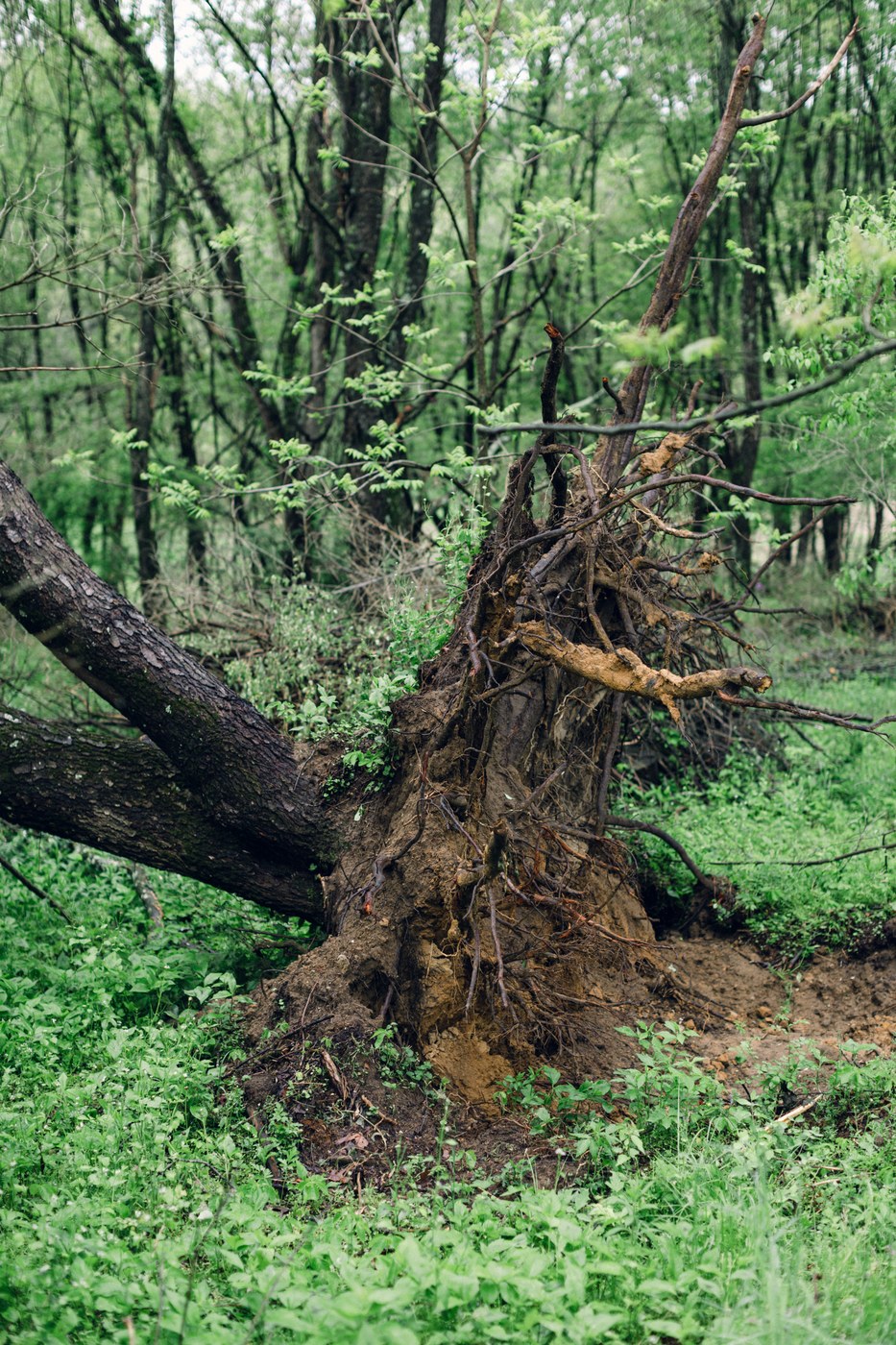Posted: May 13, 2025
Navigating through your forest safely after severe weather.

Black cherry tree uprooted by severe storms in Centre County, PA on April 29th 2025
Severe weather can wreak havoc on trees, shrubs, and other vegetation in the home yard and landscape. For homeowners, the first priority is usually assessing and correcting any damage sustained by the home and adjacent outside areas. After that immediate cleanup, don't forget the importance of assessing any forested areas for damage too!
Safety First!
Storm damage in your woodlands can be dangerous to traverse and clean up, so be extra vigilant with safety before and after entering your woods. Think through safety steps; not only what to wear (like sturdy footwear, appropriate clothing, and protective equipment), but also how to observe and navigate as you traverse your woodland. It is important to keep your eyes open and look out for dangers such as blowdowns, snags, loose overhanging branches, and changes in terrain due to new debris on the ground. Don't forget to look up, as dangers can be above you! Remember: if it looks or feels dangerous, it probably is!
Take Notes
It is a good idea to keep detailed notes of storm events and other changes in your woodlands. Here are a few points to consider as you conduct your assessment:
- Make a list of areas that need attention, and to what degree: trees that need trimming or felling, debris that needs to be cleaned up, trails that need to be cleared, etc.
- Clearly mark areas of concern with brightly colored flagging so you and others navigating your woodlot can easily identify and avoid dangers.
- Look for uprooted trees and other ground disturbances that create an opportunity for invasive plants to move in.
- Sometimes high-value, healthy trees are the victims of a severe storm. Those trees can often be salvaged and sold. It may be in your best interest to hire a professional forester to assess and make a plan for extraction.
- Note areas of heavy damage and check on those areas periodically. Internal or underground weakening of a tree, its roots, or branches is not always apparent right away.
Clean up: DIY or Professional?
After assessing your woodlot, think carefully about the damage you observed. If your property has minimal damage, you may feel confident tackling the job yourself. Again, Safety should be your first priority! Clearing access roads and trails of storm debris often involves the simple task of removing fallen twigs and branches. Larger limbs and whole trees that need to be felled and/or cleared, however, often require the use of a chainsaw or other large-scale forestry equipment that requires knowledge, training, and skill to operate safely. These tasks are not considered novice activities and should be performed with extreme caution. It is wise to hire a logger or professional forester to assist with whole tree removal, especially if your property has trees that are leaning, snagged, snapped, or have other significant damage. The professional can conduct a thorough assessment, make recommendations, and assist with difficult areas of cleanup.
Storm damage doesn't have to stop you from enjoying your woodlands. Stay safe, hire a professional if you need help, and remember to enjoy all the wonders of your forest!
Additional Resources You May Find Helpful
PA Consulting and Industrial Forester list (by county)
Helping Trees Recover After Storms, Penn State Extension 2024
Tips for creating storm resilient forests
Written by Rachel Yoder, Forest Stewardship Program Assistant, James C. Finley Center for Private Forests at Penn State
James C. Finley Center for Private Forests
Address
416 Forest Resources BuildingUniversity Park, PA 16802
- Email PrivateForests@psu.edu
- Office 814-863-0401
- Fax 814-865-6275
James C. Finley Center for Private Forests
Address
416 Forest Resources BuildingUniversity Park, PA 16802
- Email PrivateForests@psu.edu
- Office 814-863-0401
- Fax 814-865-6275

